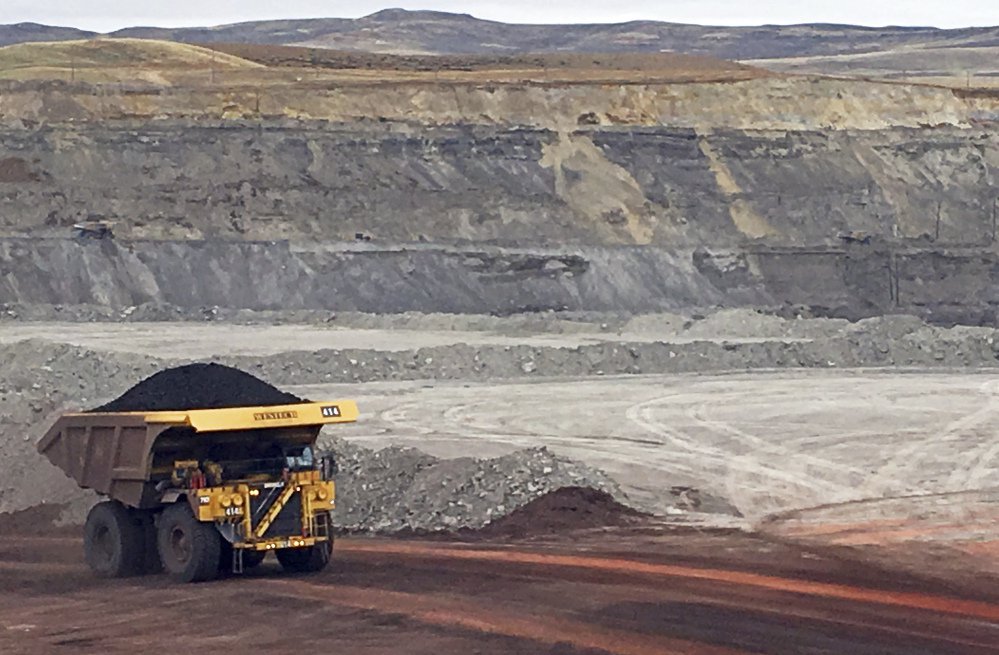BILLINGS, Montana — Here’s a look at how President Trump’s rule changes will affect the coal industry:
AN INDUSTRY IN DECLINE
Trump’s move to support coal mining is unlikely spur a quick turnaround.
Experts say coal’s biggest problem isn’t a shortage of the fuel to dig or even climate change regulations, but cheap, plentiful natural gas. Gas prices dropped as advances in drilling such as hydraulic fracturing, or fracking, greatly increased the amount of gas on the market. For many utilities, that’s made gas a more attractive fuel than coal.
Meanwhile, companies have gotten more efficient at extracting coal, meaning fewer workers are needed to dig a given amount of fuel. Mountaintop removal mining, in which hilltops in Appalachia are blasted off with explosives to expose coal seams, is less expensive and more automated than underground mining. So are the massive strip mines developed since the 1970s in Wyoming and Montana, where conveyor belts move coal for miles across the open landscape to load onto trains.
U.S. coal production fell to 739 million tons last year, the lowest level in almost four decades. From 2011 through 2016, the coal mining industry lost about 60,000 jobs, leaving just over 77,000 miners, according to preliminary Labor Department data that excludes mine office workers.
Coal’s share of the U.S. power market has dwindled from more than 50 percent last decade to about 32 percent last year. Gas and renewables have both made gains, and hundreds of coal-burning power plants have been retired or are scheduled to shutter soon – trends over which Trump has limited influence.
FEDERAL coal subsidies
The Obama administration blocked the sale of new coal leases on federal lands in January 2016 to determine if the coal program was shortchanging taxpayers and exacerbating climate change by effectively subsidizing coal.
In some cases, coal companies bought leases for as little as 1 cent per ton under a program that’s supposed to be competitive but often involves just a single bidder. The royalties these companies pay to the government on each ton of coal mined have remained unchanged since 1976.
Under the moratorium, the Obama administration was considering raising royalty rates as much as 50 percent. Trump has put that proposal on hold.
WESTERN RESERVES
About 40 percent of coal produced in the U.S. comes from federal land in Western states. Companies operating in the Powder River Basin of Wyoming and Montana, the nation’s dominant coal region, control enough reserves to last 20 years. But even before the moratorium, many mining companies were going bankrupt. They have voluntarily delayed their plans to lease tracts holding 1.5 billion tons of coal, including public lands not covered by the moratoriums.
The Appalachian region once dominated coal mining but now accounts for less than 25 percent of production.
THE CARBON BALANCE
Lease applications blocked by the Obama moratorium included more than 1.8 billion tons of coal from two dozen mines.
Burning that coal would unleash an estimated 3.4 billion tons of carbon dioxide. That’s equivalent to a year of emissions from 700 million cars. And that is just a small portion of the federal government’s coal reserves.
Environmentalists say keeping those reserves in the ground is crucial to the global effort to minimize climate change.
Send questions/comments to the editors.



Success. Please wait for the page to reload. If the page does not reload within 5 seconds, please refresh the page.
Enter your email and password to access comments.
Hi, to comment on stories you must . This profile is in addition to your subscription and website login.
Already have a commenting profile? .
Invalid username/password.
Please check your email to confirm and complete your registration.
Only subscribers are eligible to post comments. Please subscribe or login first for digital access. Here’s why.
Use the form below to reset your password. When you've submitted your account email, we will send an email with a reset code.